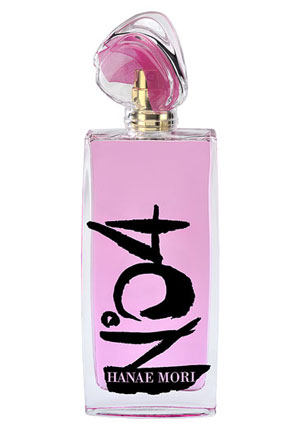

Speaking of her early married life, she once remarked that she was never invited out with her husband's friends.Īt that time "Japan was a gentlemen's country", she said, but "I wanted to be different".Mori was born on 8 January 1926 in Muikaichi, Shimane. Hanae Mori boutiques remain open in Tokyo and her fragrances are still sold worldwide.Īs a powerful businesswoman, Mori was a rarity in Japan, where boardrooms are still heavily male-dominated. Mori designed the gown worn by princess Masako - now empress - at her 1993 wedding, as well as uniforms for Japan Airlines flight attendants.Īnd in 1985, she created stage costumes for, appropriately, "Madame Butterfly" performed at La Scala in Milan.īut with growing losses in the early 2000s, her empire was largely sold off and she shuttered her Paris atelier in 2004 after her last couture show there. But this butterfly was able to fly all over the world for 70 years, because I loved making clothes." "It was like my butterfly wings were torn off. Mori built her brand into a business empire, which in its heyday occupied a whole building in Tokyo designed by the architect Kenzo Tange - later torn down and replaced with another structure at typical Japanese speed.įrom the loss of the building to the retirement of her fashion house from haute couture, "not everything was positive", she reflected in her Yomiuri column. "The young Japanese designers who live in Paris are passionately avant-garde," she told the Washington Post. She saw a distinction between herself and her Japanese peers who later made a global name for themselves - such as Issey Miyake, Yohji Yamamoto and Rei Kawakubo of Comme des Garcons fame. Mori moved her brand from Tokyo to Paris in the late 1970s and was quickly embraced by fashion insiders. Her designs combined traditional patterns like cranes and cherry blossoms - and her trademark butterflies - with Western styles, from woollen suits to sharp satin tailoring.

In 1965, Mori unveiled her first collection abroad, in New York, under the theme "East Meets West". I suddenly realised that I should change my approach and make my dresses help a woman stand out," she said, according to the Washington Post. "The whole Japanese concept of beauty is based on concealment.

When she stepped into Chanel's studio the iconic designer suggested she wear something in bright orange to contrast with her black hair. It turned out to be an inspirational encounter. "This was a kind of turning point for me," she once said of the trips in the early 1960s, during which she met Coco Chanel in Paris. She opened her first atelier above a noodle shop in Tokyo, and came to specialise in dressing the stars of the silver screen.Īs Japan's postwar economy grew, so did her business, which she ran with her husband - a textile executive who encouraged her to visit Paris and New York when the arrival of television made the film industry less profitable. "Fashion is something that pushes you, gives you courage to spread your wings and allows you to have adventures," she said.īorn in 1926 in a rural corner of western Japan, Mori studied literature at Tokyo Women's Christian University before turning her hand to design. In January, the designer summed up her feelings toward the industry in a special column for Japan's Yomiuri Shimbun daily. "When humans work with their hands, their creativity expands," Mori told AFP during a 2006 retrospective in Tokyo, where a robot modelled a replica of her classic "Chrysanthemum Pyjamas" - a kimono-like robe made from hot-pink chiffon and silk. The exclusive French club sets exacting standards for their hand-crafted, and extremely expensive, garments. The designer's trailblazing career took her from Tokyo, where she started out making costumes for cinema, to New York and Paris - and in 1977 her label became the first Asian fashion house to join the rarefied ranks of haute couture. Over the decades Mori's luxurious creations were worn by Nancy Reagan, Grace Kelly and countless members of high society.īut she was also a pioneer for Japanese women, one of a tiny number to head an international corporation.Īn employee at Mori's office said Thursday that she died at home "of old age" on August 11, and that a private funeral had taken place.
#HANAE MORI CRACKED#
TOKYO - Japanese designer Hanae Mori, who cracked the Parisian haute couture world and was dubbed "Madame Butterfly" for her signature motif, has died in Tokyo aged 96, her office told AFP. Japanese designer Hanae Mori built a business empire in Tokyo, Paris and New York


 0 kommentar(er)
0 kommentar(er)
